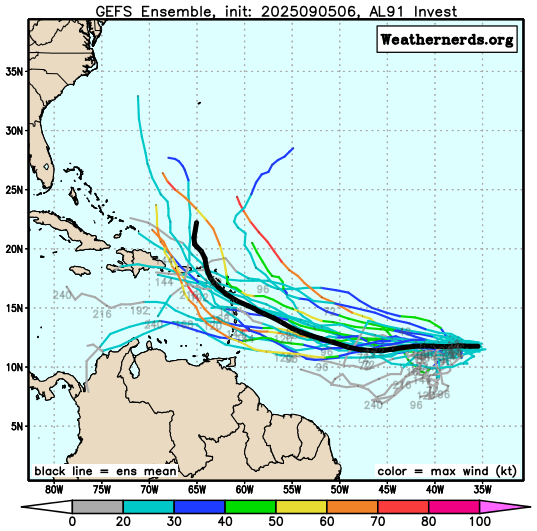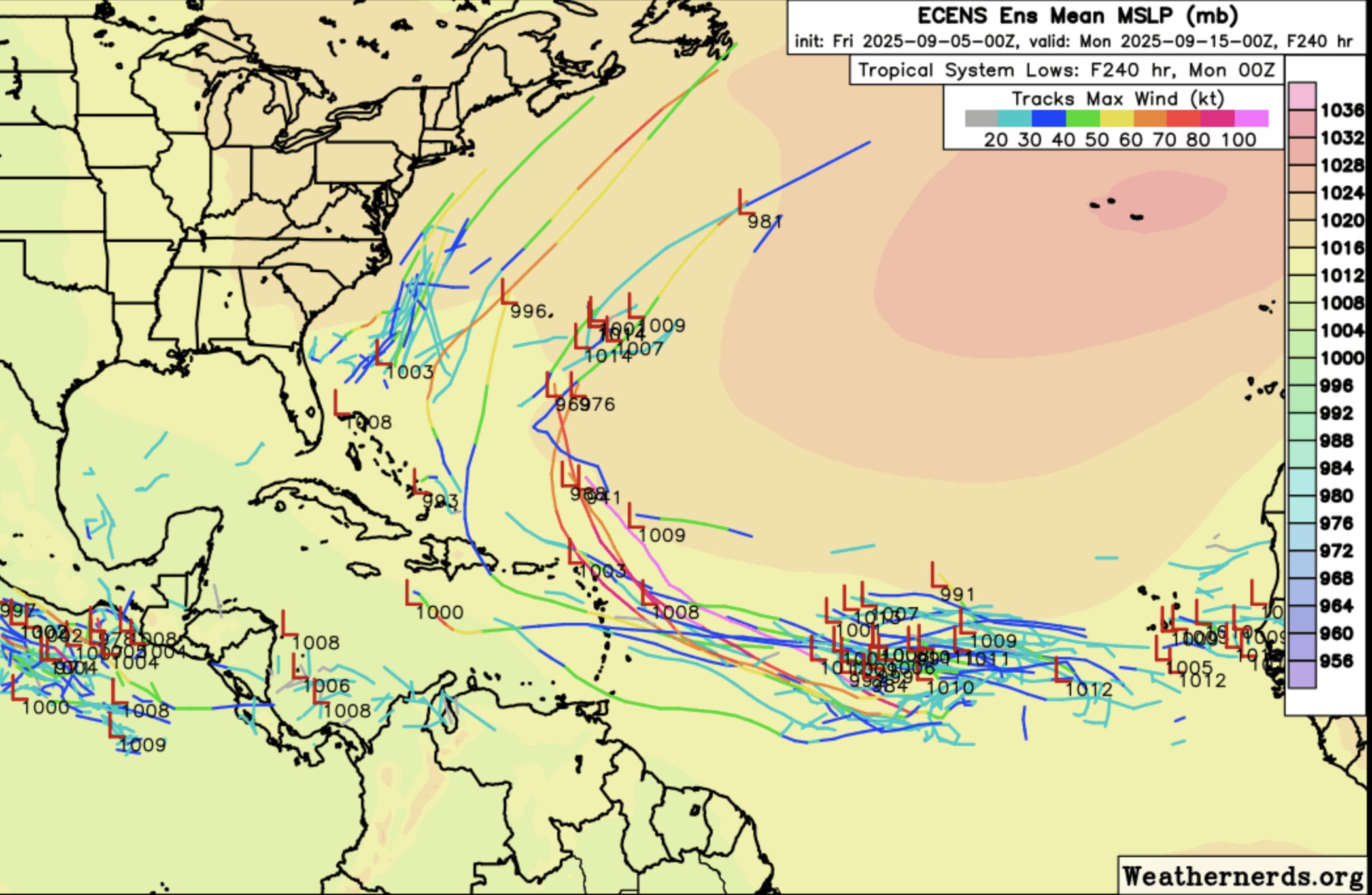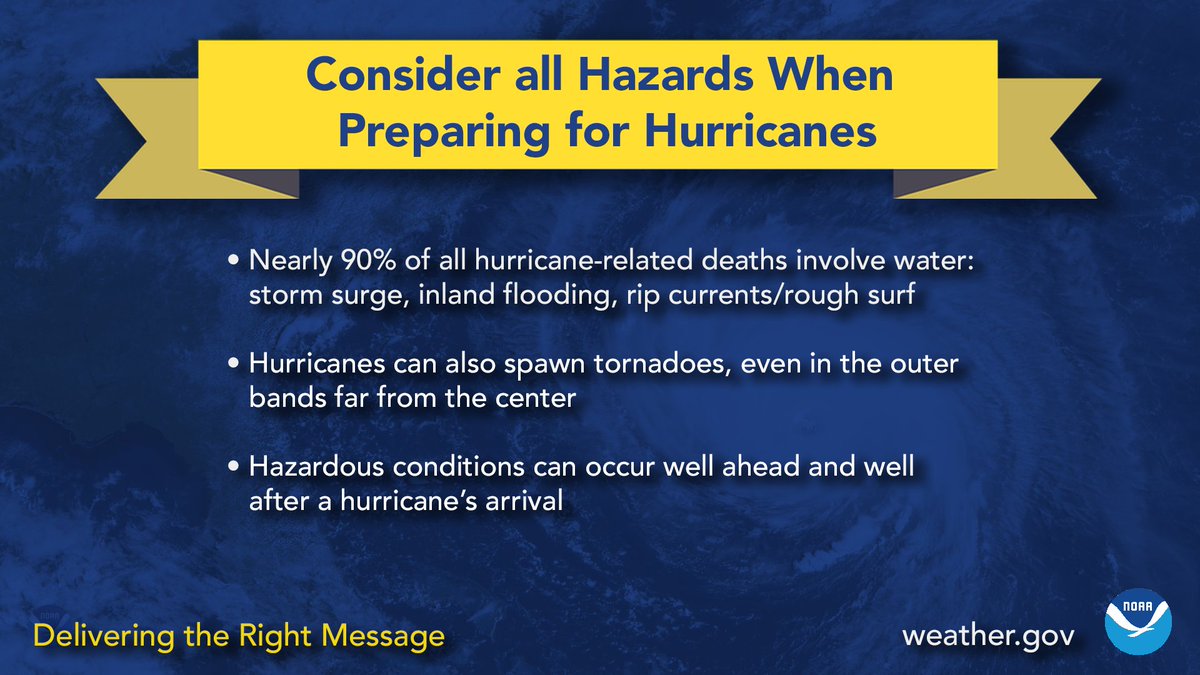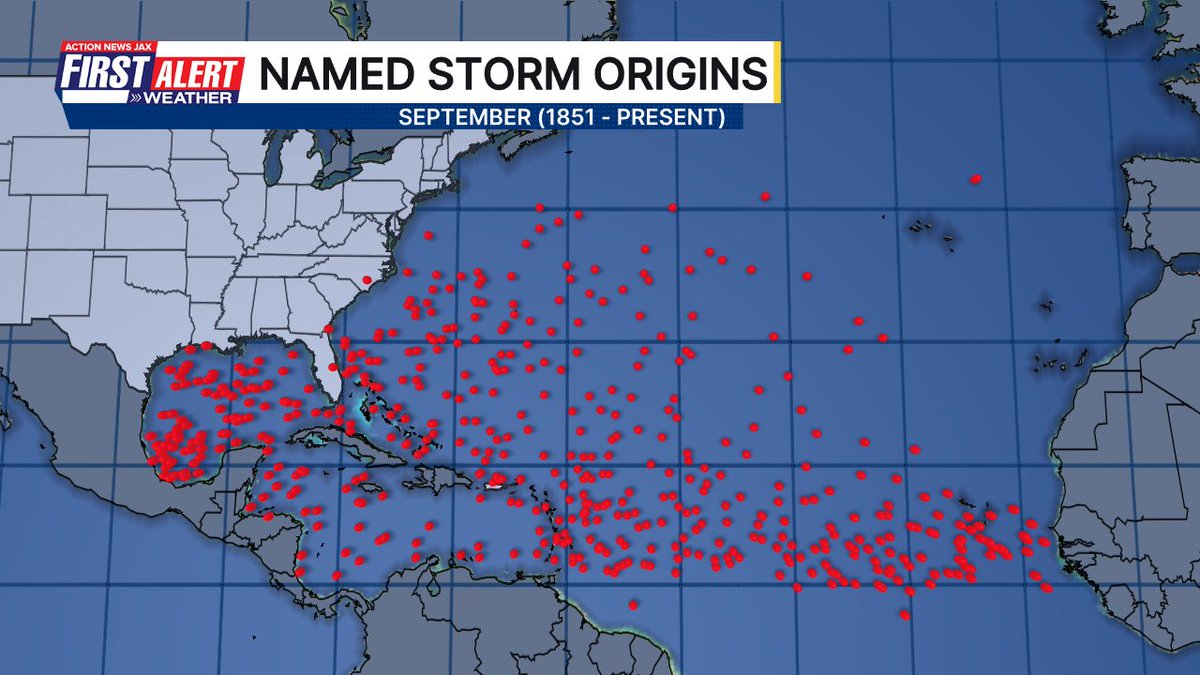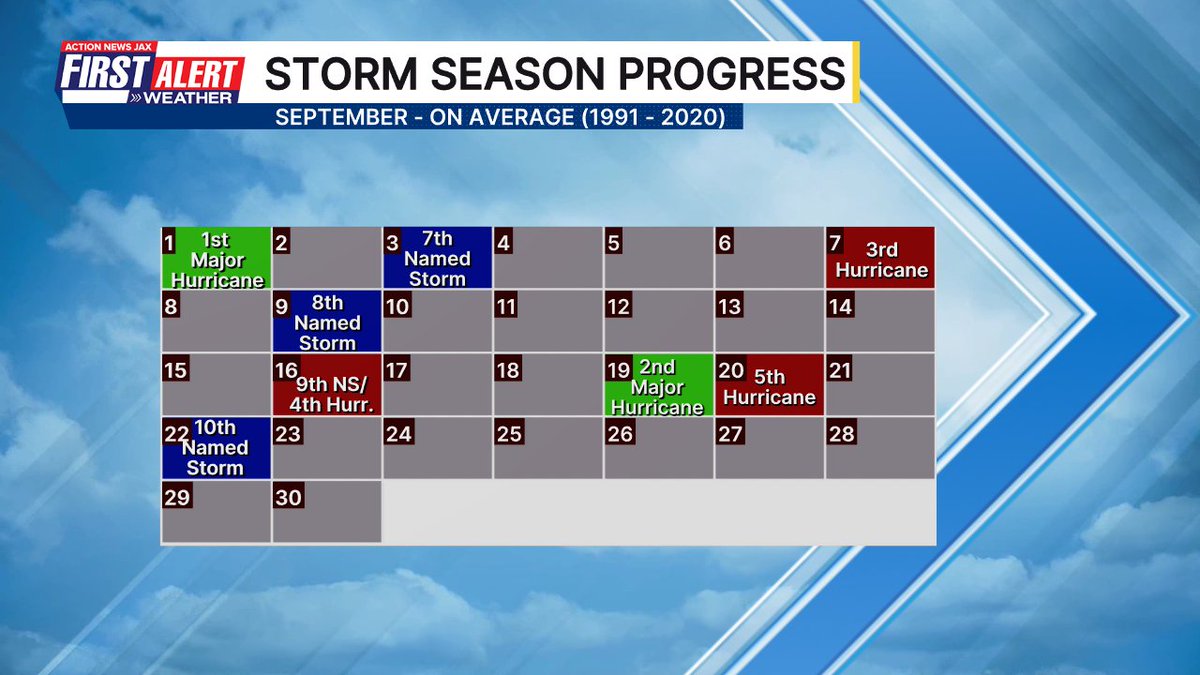Jacksonville, Fl. — THE TROPICS:
***** ALWAYS CHECK & RE-CHECK THE LATEST FORECAST & UPDATES! ****
Tropics threats/impacts for Jacksonville/NE Florida/SE Georgia: None.
The Atlantic Basin Overview:
The Atlantic hurricane season is June 1st through Nov. 30th.
Some notes right off the top:
- it’s essentially the peak of the hurricane season
- the overall environment across the Atlantic is ripe for tropical development: a “positive” pulse of the MJO is spreading eastward... there’s plenty of moisture... shear is generally low to moderate... ocean temps. are warm, of course... there’s persistent high pressure over the Northern U.S./Atlantic so we’re likely to see compensation (low pressure) to the south.
- It all adds up to the likelihood of at least several named storms over the next few weeks.
- A lot of junk out there on social media in particular. Find a reliable, common sense site/forecaster & stick with ‘em.
(1) The active tropical wave - ‘91-L’ also has an area of low pressure now & continues over the Eastern Atlantic with a high potential for development while slowly moving westward. Long range forecast global models have trended more west in general but then continue to the turn northward in some way, shape or form. How far west this wave gets may be tied to how quickly it develops. A deeper, stronger system will have a tendency to turn more northward earlier. Both the GFS & European models have not been at all consistent beyond the middle of next week which is no surprise given the long range, the fact that the system has not even developed yet & a ‘positive’ pulse of the MJO that’s spreading eastward which will result in a reset of sorts of the upper level (500mb) steering pattern (troughs & ridges).
So it’s usually helpful to turn to the ensemble models (a group of models viewed as whole vs. individually) at this point vs operational or day to day/run to run model output. And we see a general agreement of a turn north once to or near the Eastern Caribbean. We also see a number of other low pressure areas - an indication of the chaos within the atmoshere & the *potential* for tropical development well beyond ‘91-L’. Of course, the devil is in the details, & it’s just too early to determine to what extent there will be impacts - if any at all - to the U.S. &/or Bahamas. But it is becoming increasingly clear there will be at least some impacts for parts of the Caribbean anywhere from Wed. to Fri. of next week.
The GEFS is particularly “low pressure happy” which is a typical bias. We’ve also seen the GFS model this season with a right or an east bias. The Google Weather Lab “DeepMind” has also had an east bias this season & generally is not very good until a system has developed.
Plenty of time to track but something for areas of the Caribbean to keep an eye on for next week... & *perhaps* the Bahamas & U.S. the week after (Sept. 14-18).
(2) A series of tropical waves extend from the Southwest Caribbean eastward all the way to Africa - ‘tis the season! Any one of these waves have at least some potential for gradual development. And we may see some development next week or beyond along a stalled front that should extend from the Gulf of Mexico/America to Florida & across the Western Atlantic.






‘Velocity potential anomalies’ below. shows “Rising” air (green lines) equates with an uptick in overall convection. With rising air, conditions are generally more favorable for tropical development. Where there are brown lines, the air is generally sinking & is often less conducive to tropical cyclones (though not impossible to have development). A new MJO “pulse” (rising air) will arrive over the Atlantic by about mid September:

The “Buresh Bottom Line”: Always be prepared!.....First Alert Hurricane Preparation Guide... City of Jacksonville Preparedness Guide... Georgia Hurricane Guide.
STAY INFORMED: Get the * FREE * First Alert Weather app
FREE NEWS UPDATES, ALERTS: Action News Jax app for Apple | For Android
WATCH “Preparing for the Storm”
WATCH “The Ins & Outs of Hurricane Season”
READ the First Alert Hurricane Center “Preparation Guide”
LISTEN “First Alert Weather: Preparing for the Storm”
Federal Alliance for Safe Homes (FLASH) * here *.
REMEMBER WHEN A TROPICAL STORM OR HURRICANE IS APPROACHING: Taping windows is *not* recommended & will not keep glass from breaking. Instead close curtains & blinds.
Realize the forecast cone (”cone of uncertainty”) is the average forecast error over a given time - out to 6 days - & *does not* indicate the width of the storm &/or where damage might occur.
The map below shows the *average* time for a tropical wave coming off Africa to travel west & northwest. Only about 1 in 5 tropical waves - on average - become a tropical cyclone of some sort (depression/storm/hurricane):






Water vapor loop (dark blue/yellow is dry mid & upper level air):

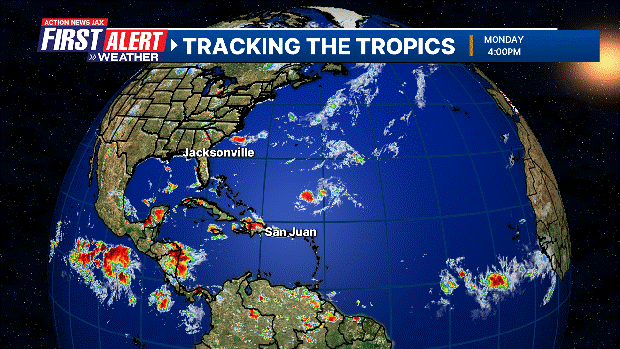
September Atlantic tropical cyclone origins:
Averages below based on climatology for the Atlantic Basin for September:
Wind shear (red - strong shear; green - low shear). Shear is typically strong to start the hurricane season:




Saharan dust spreads west each year from Africa driven by the prevailing winds (from east to west over the Atlantic). Dry air = yellow/orange/red/pink. Widespread dust is indicative of dry air that *can* interfere with the development of tropical cyclones. However, sometimes “wanna’ be” waves will just wait until they get to the other side of - or away from - the dust plume then try to develop if other conditions are favorable (we saw this with Beryl & Debby last year). It’s my personal opinion that there is way too much “hoopla” about the presence of Saharan dust & how it relates to tropical cyclones. In any case, the peak of Saharan dust typically is in June & July, & we are indeed seeing a large “blobs” of Saharan dust over the Central & Eastern Atlantic that’s thinning with westward extent but enough of it to make for hazy skies across the Caribbean & - at times - across parts of Florida.
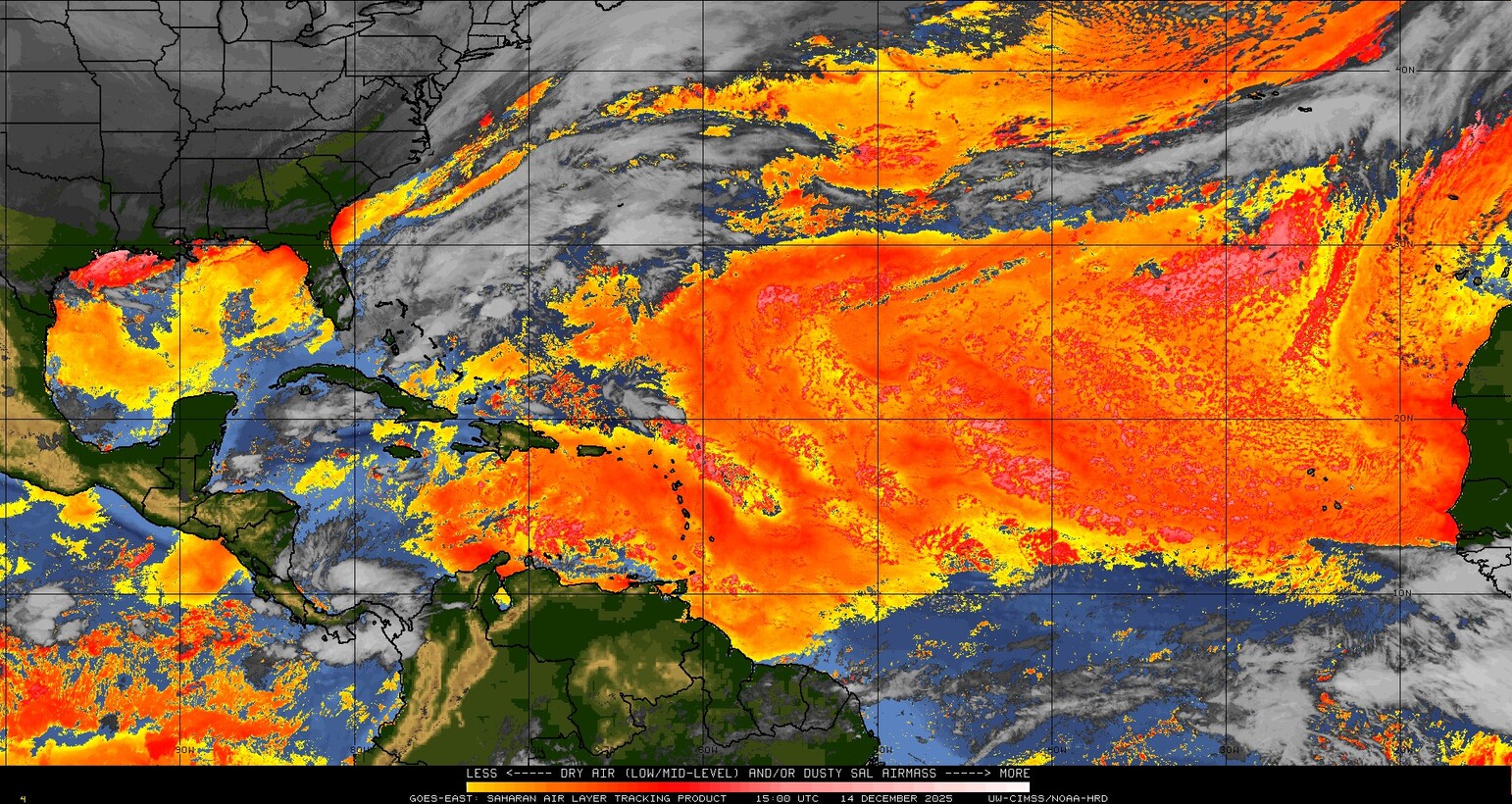
2025 names..... “Gabrielle” is the next name on the Atlantic list (names are picked at random by the World Meteorological Organization... repeat every 6 years). Historic storms are retired [Florence & Michael in ’18... Dorian in ’19 (the last time this year’s list was used) ... Laura, Eta & Iota in ‘20 ... Ida in ‘21 ... Fiona & Ian in ‘22... no names were retired in ‘23 for the first time since 2014... & Beryl, Helene & Milton last year in 2024]). The WMO decided - beginning in 2021 - that the Greek alphabet will be no longer used & instead there will be a supplemental list of names if the first list is exhausted (has only happened three times - 2005, 2020 & 2021). The naming of tropical cyclones began on a consistent basis in 1953. More on the history of naming tropical cyclones * here *.

Hurricane season climatology:
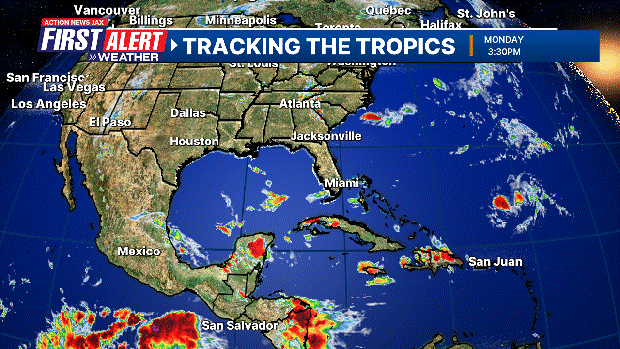



East Atlantic:




Mid & upper level wind shear (enemy of tropical cyclones) analysis (CIMMS). The red lines indicate strong shear:
Water vapor imagery (dark blue indicates dry air):

Deep oceanic heat content over the Gulf, Caribbean & tropical Atlantic. The colors will brighten greatly as the water warms to greater depths deeper into the season. It’s worth noting that the deep oceanic heat content right now is not as high as this time last year.

Sea surface temps.:

Sea surface temp. anomalies:

SE U.S. surface map:

Surface analysis centered on the tropical Atlantic:

Surface analysis of the Gulf:

Caribbean:

Atlantic Basin wave period forecast for 24, 48, 72 & 96 hours respectively:





This past spring I visited the west coast of Florida - from Cedar Key to Tampa Bay - to see how the area is recovering from the very rough ‘24 hurricane season namely Helene & Milton:
East & Central Pacific:
“Lorena” has degenerated into a post-tropical low but still some heavy rain, gusty winds & rough seas & surf will affect the Baja Peninsula. Remnant tropical moisture will spread north into parts of Arizona & New Mexico over the weekend resulting in some heavier rainfall for Southeast Arizona & Southern New Mexico.

“Kiko” will be a threat to Hawaii - by the middle of next week - as the tropical cyclone is weakening but still may be a tropical storm not far from Honolulu:






Central Pacific:

Hawaii satellite imagery:


West Pacific:
Global tropical activity:
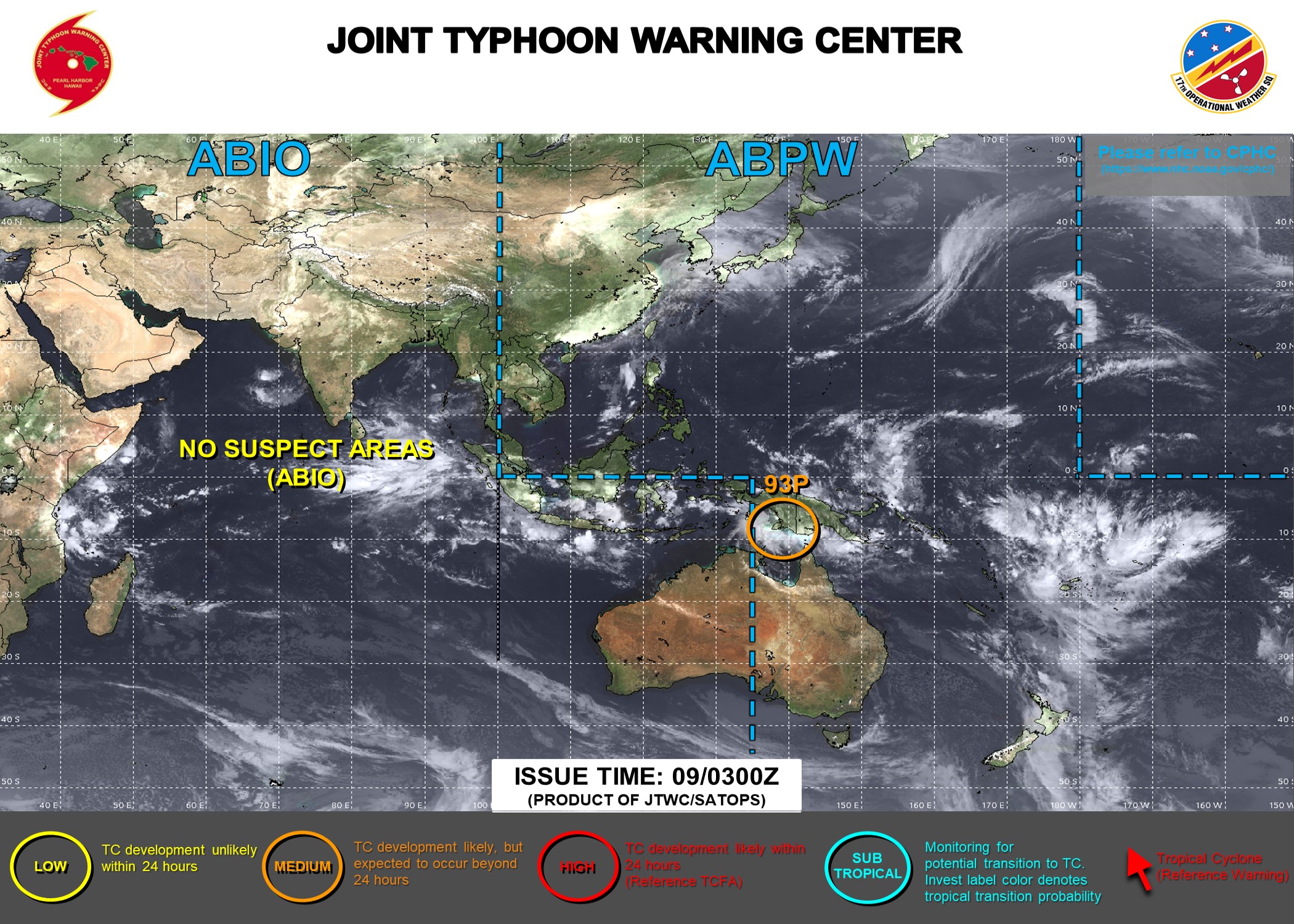
“Peipah” will skirt Japan through the weekend:
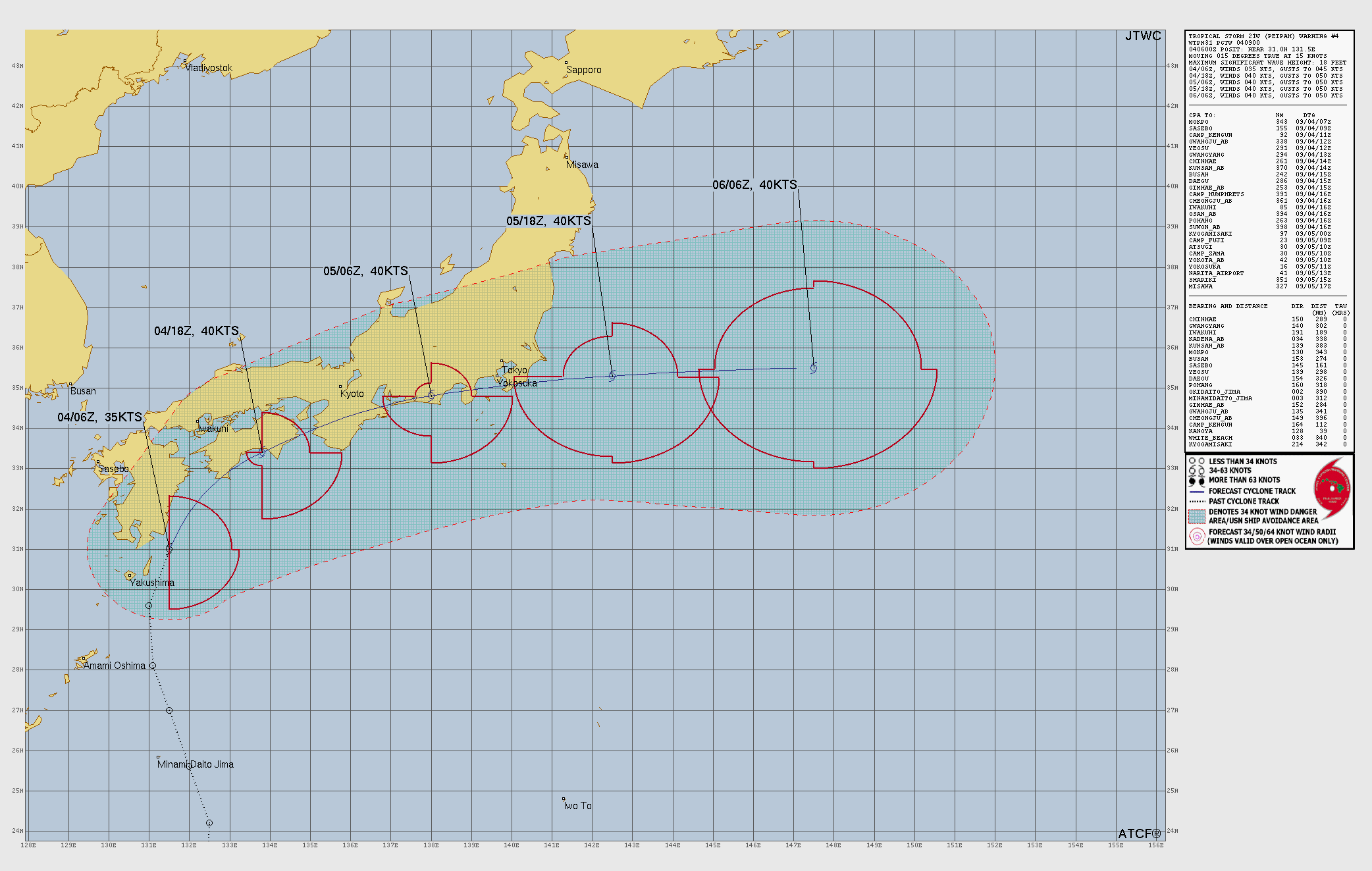
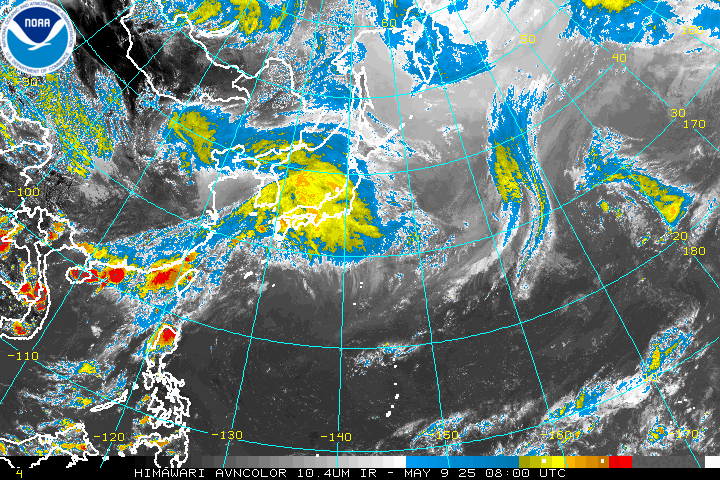
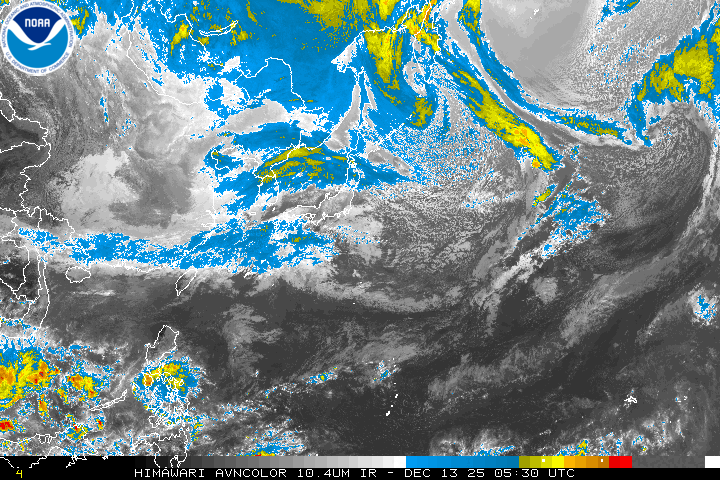
Cox Media Group



